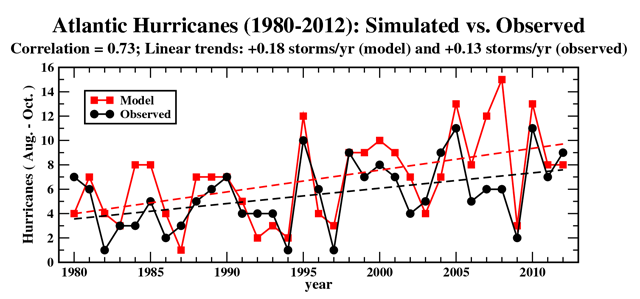Regional Modeling
Climate modeling improves our understanding of atmospheric circulations and extreme weather events such as hurricanes. Investigating hurricane sensitivity to climate change requires a variety of regional models such as the ZETAC Model and Downscaled ZETAC and Hurricane Forecast System Model. These GFDL models simulate Atlantic hurricane seasons and their sensitivity to large-scale variability, including climate change.
GFDL researchers have developed a regional dynamical downscaling model for Atlantic hurricanes and tested it by comparing with observed hurricane activity since 1980. This model, when forced with observed sea surface temperatures and atmospheric conditions, can reproduce the observed rise in hurricane counts between 1980 and 2012, along with much of the interannual variability (Figure 1). Animations showing the development and evolution of hurricane activity in the model are available here.
An FAQ describing this use of this regional model in climate change experiments is also available.

Figure 1: Simulated vs. observed Atlantic hurricane counts (Aug.-Oct) for 1980-2012 using the regional downscaling model of Knutson et al. (2008)


